With unexpectedly cooler weather here in N Georgia in September, I am spending more time in the vegetable garden and orchards. I had planted jujube saplings a few years ago in the terraced orchard and neither irrigated nor tended them until recently I noticed small round fruit. At the time they were green and tasteless. Now they are brown or red with wrinkled skins and a delicate flavor, a bit like an apple. There are two small jujube trees – the Li Jujube provided just one fruit, the Lang Jujube is plentiful. Both were planted in February 2011 opposite each other.
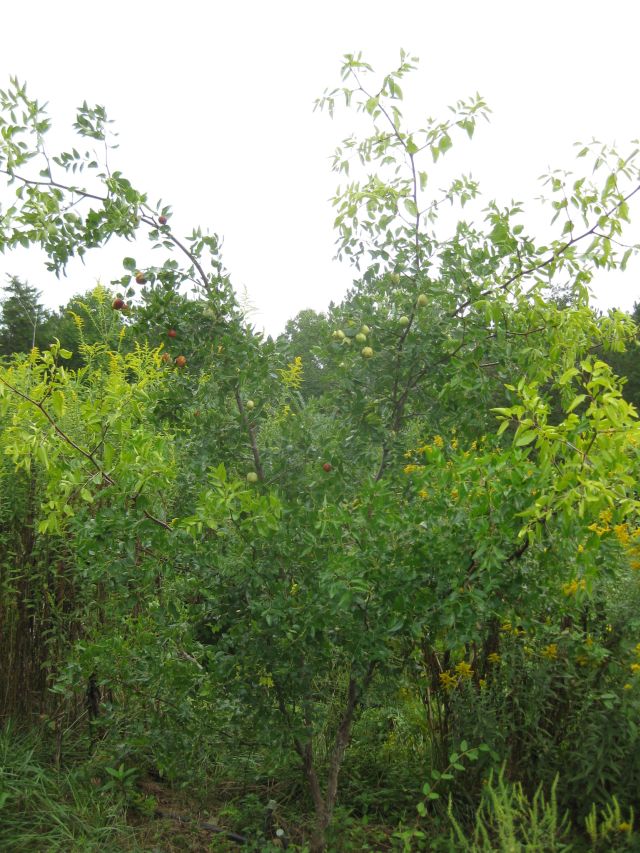
The fruit is smaller than it looks, in the photo below.
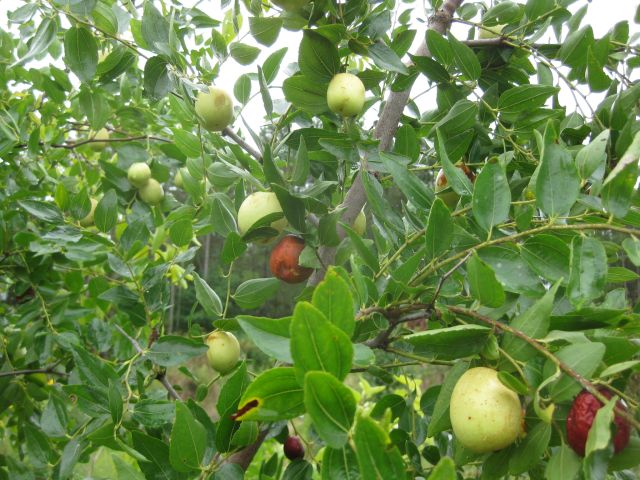
I mentioned in the caption, 3 great Canadian aids: 1) my EyesOn addition to my surveillance systems (designed in Canada, made in Taiwan) which I previously posted, is invaluable. It texts and messages me whenever there is a change in the security system. This can mean being woken in the middle of the night when the text message beep goes off, but I have security of mind knowing the premises are continuously monitored, not by neighbors who may not hear a siren, but by the flow of electrons (I am taking a circuit & electronics course with edX and electrons are on my mind).
2) is the excellent organic growing book – “the market gardener” by J M Fortier from Canada. He uses covers to exclude pests, a move I will have to make. Recently in Marin county near San Francisco at the weekly organic growers market, I asked a farmer if she sprayed (meaning organic sprays) and she said no. So I asked the obvious follow up question – how come no pest damage? She mentioned the usual – beneficials, healthy plants etc. but then said the produce was from a green house. Which to me was the solution – unless you have a controlled environment I believe after a while (in the first year they may not yet have discovered you) there will be some pest damage.
3) my third great aid is the DVD “the permaculture orchard: beyond organic” by Stefan Sobkowiak, Canada. Lots of insights. I am adopting many of them and right now I am following the pruning and training suggestions. One of them is that upright branches want to keep growing wood and leaves, but if you can train them to stay horizontal they will focus on bearing fruit. So below is my Ein Shemer apple tree, planted at the same time as the jujube and also bearing fruit this year and you can see I have attached wires to the branches to bring them down.
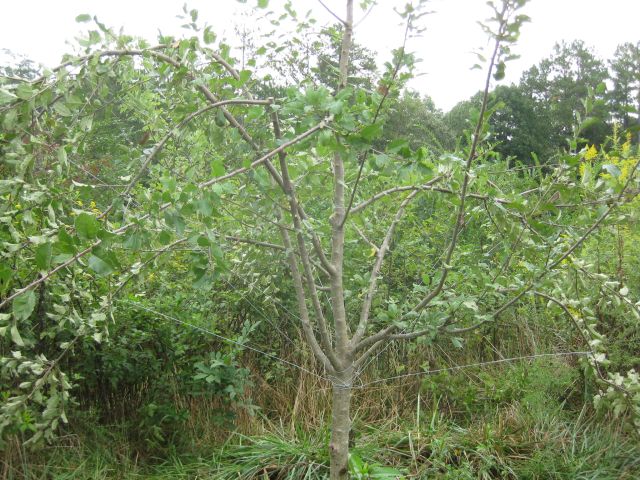
The training is with wires which I hope to remove soon – I have seen too much damage done when bindingse were left to strangle a trunk.
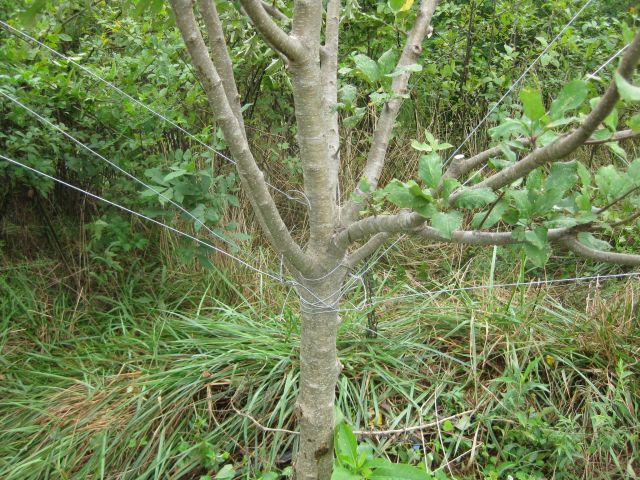
My Stellar cherry tree (planted at the same time as the jujube and Ein Shemer) has lost all its leaves.
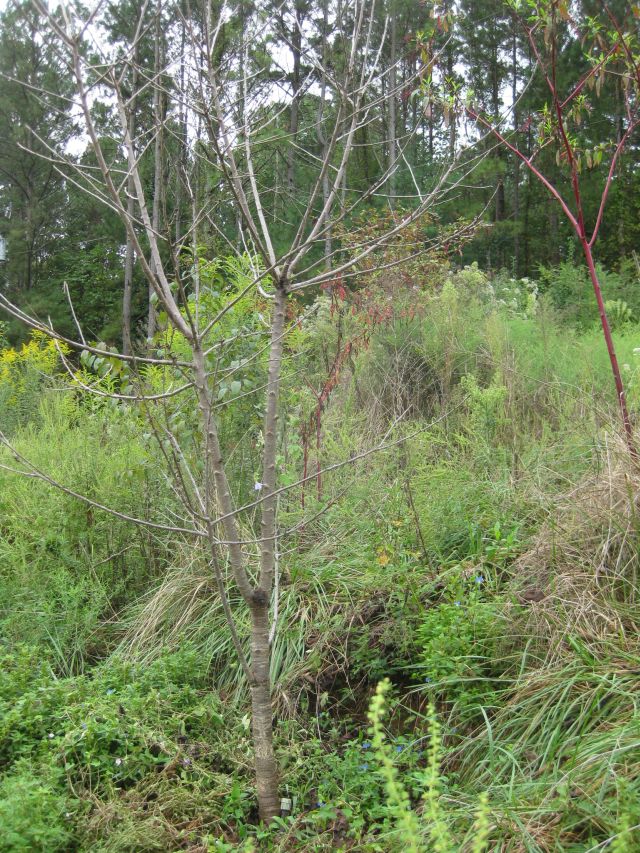
Incidentally, a forester told me how to identify cherry trees – they have horizontal lenticils. Casual observation shows a dark brown gum substance at the crotch of the two limbs.
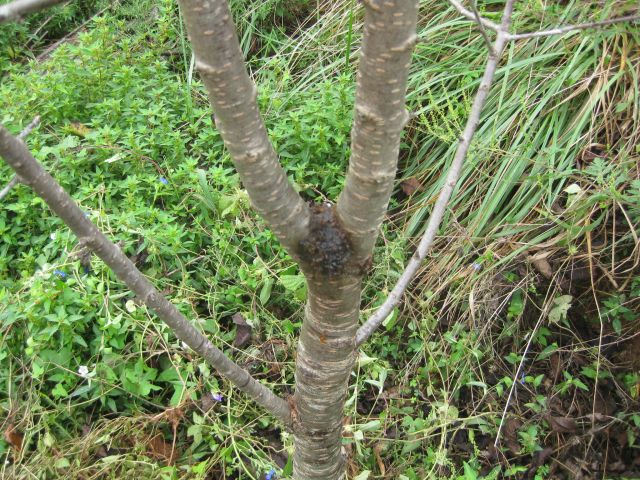
The DVD recommends eliminating any branch off the main trunk which has a diameter 50% or more of the trunk. Had I done this I might not have the current problem.
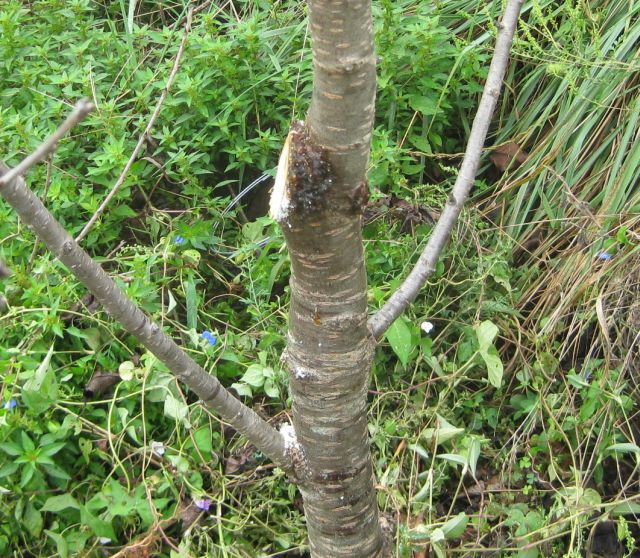
After removing one limb and spraying my handsaw with alcohol and then oil, I decided to apply a neem treatment to the wound. Some 5 paces from the tree I was stung twice successively with little yellow buzzers chasing after me as I took off. With more control and presence of mind, I may have paused to observe if these were bees or wasps, but when you are attacked, the first instinct is to get away. noticed a stinger on my arm and thought they could be bees since wasps don’t leave a stinger. I put on my bee suit and went back to the assault location. After a short while I saw bees going into and out of an underground location. I must have stood on the entrance. Armored with bee suit and gloves I sprayed the cherry tree wound with the neem and will watch developments with interest while treading carefully. And the bees I will leave – good luck to them, and they may provide the drones to fertilize my next queen. And with close on 3 gallons of honey harvested in August, I am good until next year.
Postscript – after more thought I decided that the little yellow insects were not honey bees and they were a risk to me or any visitors. One of the stings I received, tho not much swelling, nonetheless entertained me between 2am and 3am the next morning. So I determined to eradicate them which I did early one morning, regretfully.
